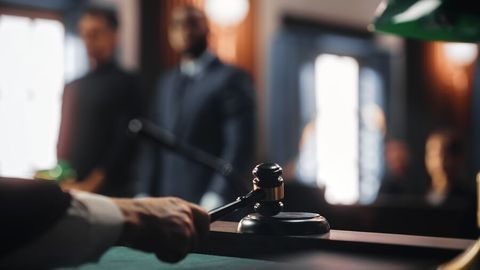Supreme Court Stays Enforcement of OSHA’s COVID-19 Vaccination and Testing ETS
Client Alert | 1 min read | 01.13.22
On January 13, 2022, the Supreme Court granted applicants’ emergency motion to stay enforcement of the Occupational Health and Safety Administration’s (“OSHA”) COVID-19 Vaccination and Testing Emergency Temporary Standard (“ETS”). In its decision, the Court explained that the plaintiffs were likely to succeed in showing that OSHA lacked the statutory authority to mandate “84 million Americans to either obtain a COVID-19 vaccine or undergo weekly medical testing at their own expense.” The Court reasoned that “[a]lthough COVID-19 is a risk that occurs in many workplaces, it is not an occupational hazard in most” and to permit “OSHA to regulate the hazards of daily life . . . would significantly expand OSHA’s regulatory authority without clear congressional authorization.” While the Court acknowledged that OSHA has authority to regulate occupational risks related to COVID-19 where the virus “poses a special danger because of the particular features of an employee’s job or workplace,” it emphasized that OSHA’s “indiscriminate approach” does not consider what is an occupational hazard versus a general risk.
Three justices—Breyer, Sotomayor, and Kagan—issued a dissenting opinion, arguing that the mandate “falls within the core of the agency’s mission: to ‘protect employees’ from ‘grave danger’ that comes from ‘new hazards’ or exposure to harmful agents.” Moreover, the dissent opined that even if the merits were a close question, the Court should not have issued a stay here because the balance of harms and the public interest do not support such an action since “[t]he lives and health of the Nation’s workers are at stake” and outweigh any potential economic harm.
The Court also issued its decision regarding the Centers for Medicare & Medicaid Services interim final rule. Unlike with the OSHA ETS, the Court granted the Government’s request to stay two district court decisions enjoining enforcement of the rule.
Contacts
Insights
Client Alert | 6 min read | 11.26.25
From ‘Second’ to ‘First:’ Federal Circuit Tackles Obvious Claim Errors
Patent claims must be clear and definite, as they set the boundaries of the patentee’s rights. Occasionally, however, claim language contains errors, such as typographical mistakes or incorrect numbering. Courts possess very limited authority to correct such errors. The United States Court of Appeals for the Federal Circuit has emphasized that judicial correction is appropriate only in rare circumstances, where (1) the error is evident from the face of the patent, and (2) the proposed correction is the sole reasonable interpretation in view of the claim language, specification, and prosecution history. See Group One, Ltd. v. Hallmark Cards, Inc., 407 F.3d 1297, 1303 (Fed. Cir. 2005) and Novo Indus., L.P. v. Micro Molds Corp., 350 F.3d 1348, 1357 (Fed. Cir. 2003).
Client Alert | 5 min read | 11.26.25
Client Alert | 6 min read | 11.25.25
Brussels Court Clarifies the EU’s SPC Manufacturing Waiver Regulation Rules
Client Alert | 3 min read | 11.24.25







